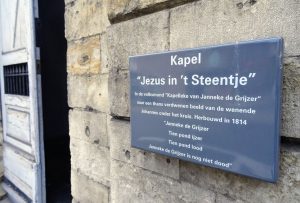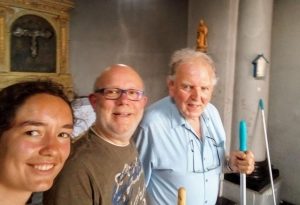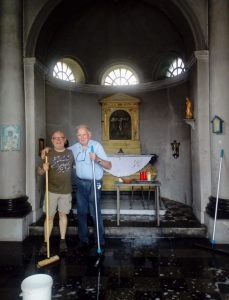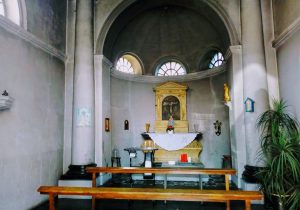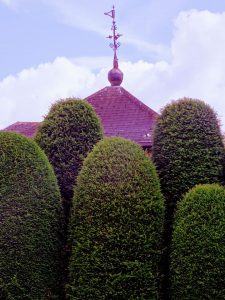Along the Naamsestraat, located in the grounds of the former cemetery of Sint-Kwinten’s church, there is a chapel that was (re)built in 1814. The original chapel, built in 1725, was destroyed by the French in 1798.
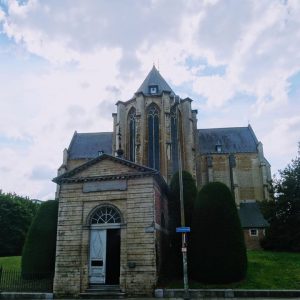
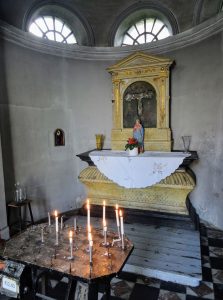
A stone that is positioned above the altar depicts the crucified Christ. Legend has it that this stone was unearthed at the site where the chapel was built. Before the original chapel was destroyed, the stone was taken away to a safe place. The stone was considered ‘miraculous’ because it was alleged to increase in size every year. It is probably a fragment of an ancient grave stone. Hence Jesus in ‘t Steentje (Jesus in the little stone).
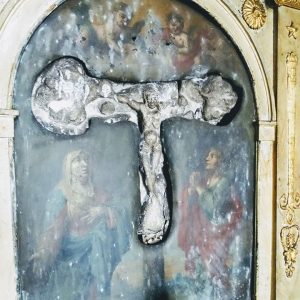
Among the people of Leuven, the chapel is better known as the Chapel of Janneke de Grijzer, so-called after a statue of a weeping (grijzend in the Leuven dialect) St. John under the cross, which has since disappeared. It was invoked by many parents with crying toddlers so that their children would cry less. (See Jacqueline Lambrechts, “De kapel van Jezus in ‘t steentje”, 750 jaar kerk in Leuven, 2002.)
